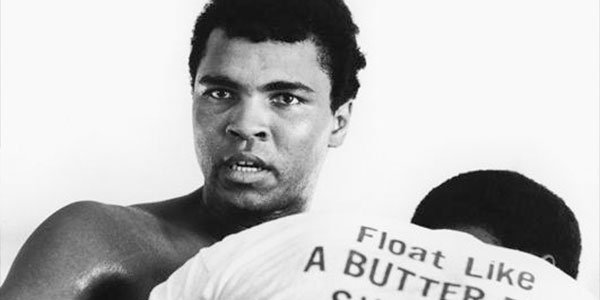Muhammad Ali: The Greatest (part III)
Posted: April 10, 2015
Updated: October 6, 2017

Muhammad Ali is considered by many to be the greatest single athlete of the 20th century.
Muhammad Ali, born Marcellus Cassius Clay Jr., was born in Louisville, Kentucky. Many of the heavyweight champions mentioned have been widely considered among the greatest. Muhammad Ali is considered the greatest among these. Hence his nicknamed “the greatest” is well-earned. Ali was voted by Sports Illustrated as “Sportsman of the Century.” Ali’s life was and continues to be on the forefront of US gambling news.
As a professional, Ali had a stellar record until he was stripped of his boxing title by the U.S. government for his refusal to enter the armed services draft. In his 3 years from boxing, Ali gained popularity in the anti-war movement. After being reinstated, Ali soon faced Champion Joe Frazier and lost. A following bout with Ken Norton left Ali with a broken jaw. After recovering, it was time for Ali to face Frazier again.
Ali and Frazier Go for a Sequel on the Way to the Jungle
Ali started with force early in the fight and was able to stun Frazier in the second round. Frazier, able to come back striking Ali in the 7th round, began an exchange of winning rounds. Ali was able to stay away from the Frazier Philadelphia left hook by putting him in a clinch. At the end of the 11th round, Ali was awarded with the decision. Frazier’s defeat would set Ali up to face George Foreman.

Next bout would be the famous “Rumble in the Jungle” which was to be held in Zaire. Nobody gave Ali a chance when it came to the odds on this fight. Whoever waged on Ali in the U.S could have the payday of their life according to US gambling laws. Foreman defeated Frazier and Norton handily which made nobody including Ali supporter Howard Cossell predicted Ali.
The fight started with an aggressive Ali who outscored Foreman in points. From round 2, Ali began to use the ropes while Foreman delivered huge body punches. Foreman was unable to deliver any serious head shots. Foreman later made the claim that Ali’s coach Angelo Dundee had the ropes loosened to allow Ali to lean better on them. The leaning style became known as the “rope-a-dope” and is still sheds much controversy to this day.
Ali would later admit that Foreman put knocked him out twice while he was on his feet. In the 8th round, Foreman, while avoiding a wild punch, became off balance. Taking advantage of this, Ali threw a barrage of punches including a hard right cross that knocked Foreman down. Ali regained the Heavyweight Title and became the only boxer that could ever stop Foreman. He was never able to get a rematch with Ali.
Enter the “The Thrilla in Manila”
It was time for one of the greatest fights in boxing history. The world of mobile betting would have a field day. Both Ali and Frazier were scheduled to fight on October 1, 1975. This fight would be the considered the “fight of the century.” Ali, having beaten Foreman who beat Frazier, was considered the favorite. Ali once again used mental tactics to raise the gate and negatively influenced Frazier.

Ali insulting remarks as a gorilla would stay with Frazier for most of his life. In the 38 degree centigrade heat, Ali came out tough with an array of blows as Frazier responded in kind. Soon Ali tired and resorted to the “rope-a-dope” style made famous from his “Rumble in the Jungle” with Foreman. Although Ali did deliver some counter punches, he took the beating and waited.
Frazier tired in the 12th round and Ali fired some blows which closed his left eye as well as open a cut over his right eye. In the wake of Frazier’s vulnerability, Ali took over rounds 13th and 14th. The fight was eventually stopped by Frazier’s trainer by refusing to allow Frazier to come out in the 15th round. Despite Frazier’s two swollen eyes, he still wanted to fight more.
Ali was quoted as saying the fight was “the closest thing to dying that I know.” Many historians upheld the rumor that Ali’s beating from “the Jungle” and “Thrilla” fueled Ali’s obvious problems with brain damage later in life. But for the moment, Ali was instantly a legend and had to continue fighting.
















